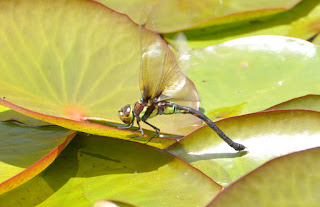 |
| Euphaea thosegharensis |
So far only three endemic species of Euphaea are known from Western Ghats. Euphaea fraseri is a very common species in the forested foot hills of Western Ghats, and is found from Kanyakumari to Maharashtra at 100 -1200 m. Euphaea dispar is restricted to North of Palghat gap from South Kanara and Coorg to Nilgiris from 1066 to 1828m. E. cardinalis is a montane species above 900 m found South of Palghat gap in Anamalais, Palnis and Agasthyamalai Hills. Both new species are restricted to the high elevation streams and riparian patches of Satara district around Thoseghar and Kaas lake in Maharashtra and are thus endemic to the northern Western Ghats, as far as it is known.






